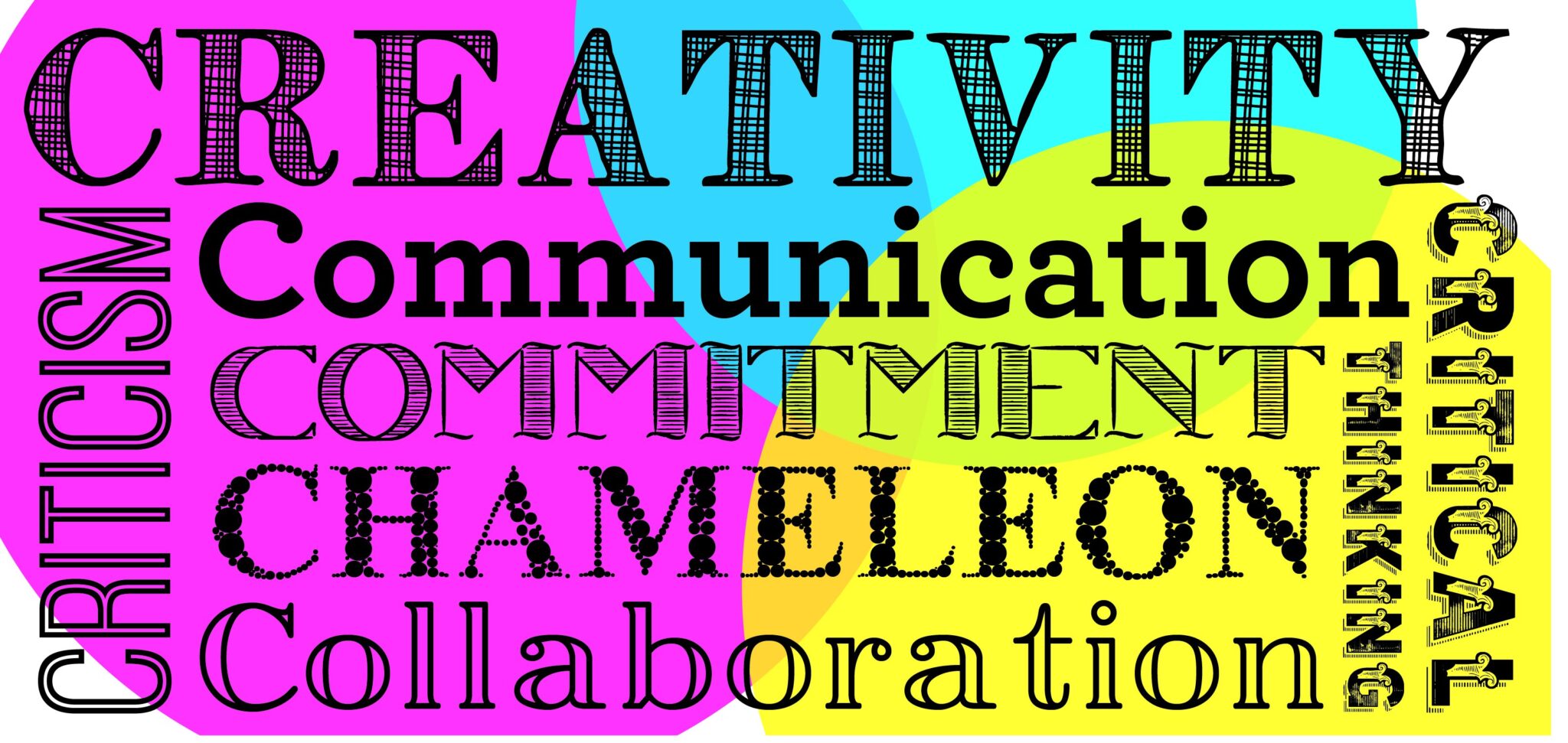To be a successful graphic designer it takes more than just learning the trade. Having the skills of a designer is merely the first step of many. I’ll go over seven characteristics that I think are needed in order to be successful in this field. Some are ingrained in us, and others are learned, but together they build success.
- Creativity is at the core of being a successful designer. I like to think of creativity as the part of childhood that refused to acknowledge that you grew up. Using this super power as often as possible keeps it strong. Successful designers are creative in their work, but also have ways to be creative outside of the job. Whether it is taking on more projects in your field that are totally opposite of your work projects, or finding something in another field. For me I find my creative juices flowing when I get in the kitchen, or when I sit at my sewing machine. Using my creativity outside of the job allows me to keep my eyes open to other ways of thinking about the world so I can bring it back to my work.
- Communication can be the deciding factor between success and failure. You could have all the talent in the world, but without communication, no one would know. Being able to effectively communicate your ideas and process gives clients a sense of confidence they need to invest in a project. But communication is a two-way street. You must also be able to listen to the client and truly extract what they need. Being able to detect the scope of a project is essential to completing it with success.
- Commitment might be the thing that makes or breaks a designer in the long run. The passion behind the drive to become the best at what you do should always be strong. Design is a field that is constantly evolving. Trends, programs and processes are always developing and changing. You can never be done learning if you want to continue to be successful. Following leaders of the field, or checking relevant publications often are two easy ways to stay on trend. Finding tutorial sites can help you continue to develop beneficial skills that will keep you on top.
- Criticism, while essential, can be tricky. The aim is not to take it personally. Criticism is just another person’s opinion. They are looking at something with fresh eyes and a perspective you might not have, so it’s best to listen carefully when being critiqued. Take this as an opportunity to learn something new that will help you grow. If asked for criticism on a project, be honest about what’s effective and avoid saying things like “I don’t like it.” Always be constructive with your advice, you would want someone to do the same for you.
- Collaboration is one of those skills we were taught all through school. Remember group projects and the protest you felt about being given them? Well your teachers were giving you a valuable lesson about being a co-worker. Often it takes an entire team of people to put a project together. The designer has to be able to work with each person individually and as a whole. Becoming an asset to your team should be a motivator.
- Critical thinking is necessary for problem solving, and that’s a large part of what design is. To a designer, problem solving isn’t a chore, but a challenge. Finding the right solution comes from using knowledge acquired throughout life and research to analyze the issue at hand. A process that is used in many aspects of life, the successful designer brings that brainpower to work and skillfully applies the best solution.
- Chameleons change to adapt to their surroundings for survival, and the same can be said of designers. It’s important for a designer to have a strong sense of self and a solid brand, but it shouldn’t be restricting or limiting. To find success, a designer must be able to adapt to different styles and trends depending on the client’s needs. You must be able to put your own taste preference and style aside if it’s not appropriate for the project. Successful designers will adapt to their surroundings for success.
Using a little of each of these, its easy enough to seize success. If these are things you were not born with, practice will get you there. Continuing to exercise these skills will keep them strong and useful. Do you have what it takes to be a designer extraordinaire?




